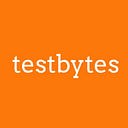10 Differences Between Verification and Validation in Software Testing
Delivering an optimum quality product, be it software or hardware, is a tedious task. A product has to undergo and pass through various stages of planning, development and testing to ensure that the final product delivered is best in terms of quality and performance. Out of the numerous stages involved in products development, one of the common steps that are taken at every stage of the development is testing.
Testing is the process that verifies and ensures that the final product delivered, meets the industry standards and specified requirements. While there are varied types of testing that can be conducted on the products based on their requirements and stage of development, there are certain aspects that are in common. Two of these are: verification and validation in software testing.
Commonly confused by the readers, the two hold a different meaning in context of software testing as mentioned below:
Verification
- It is a process of assessing a software product during a particular development phase to determine if it meets the requirements/ conditions specified at the beginning of that particular phase.
- One of the most important phases of software development, verification is static and includes substantiation of all the necessary documents, code, design and program.
- This phase includes all the activities that ensure the delivery of best quality product such as design analysis, inspection and specification analysis.
- Some common methods of conducting verification are meetings, inspection and review.
Also Read: The Reasons Why Testbytes is the Leading Software Testing company
Validation
- Validation is the process of testing a software product after its development process gets completed
- It is conducted to determine whether a particular product meets the requirements that were specified for the product
- It is a dynamic process that evaluates a product on parameters that help assess whether it meets the expectations and requirements of the customers
- Some common methods of conducting validation are black box testing, white box testing and gray box testing
Difference between Verification and Validation
Gaining an understanding of the difference between the two is important as this can help ensure the development of the best quality software product.
The process of verification aims at confirming whether a particular product meets the requirements specified at the beginning of the development phase. Whereas, the aim of validation is to check whether the final product conforms to the set requirements and standards.
Verification is a kind of static process that involves assessing of design, documents, program and code. On the other hand, validation is a dynamic process that validates and tests the quality of the final product.
Since verification is a static process, it does not involve execution of code. Whereas, validation is a dynamic process that cannot be completed without implementing a code.
Verification is a manual process that cannot be completed without intervention by a human. On the other hand, validation is machine-dependent and can be completed solely using computers.
Verification is a low-level exercise that enables an easy identification of errors that cannot be trapped using validation. On the other hand, validation is a high-level exercise that ensures optimum product quality as well as easy identification of errors that often go unidentified using process of verification.
The QA team is responsible to carry out the process of verification and ensure that the software being developed is at par to the requirements specified in the document. On the contrary, the process of validation is carried out by the testing team.
Also Read : 3 Phases Involved in Testbytes Penetration Testing Process
The process of verification is to be completed before validation. Whereas, validation generally follows after the process of verification.
The errors caught during the process of verification leads to lesser cost and expenses to the company as compared to the ones found during the process of validation.
The process of verification evaluates plans that were made for the product, requirements that were specified, specifications related to design, test cases, etc. Whereas, validation enables the evaluation of the product or software that has been developed by the team.
Verification commonly targets on things like specifications, database design, architecture, product design, etc. On the other hand, validation tests and targets things like product’s unit, module, integrated modules and the final product.
Conclusion
Verification and validation are equally important to find errors and ensure that the final product that goes out in the market is the best. Therefore, one must never underestimate the significance of any of the two.
Originally published at www.testbytes.net on November 14, 2017.
